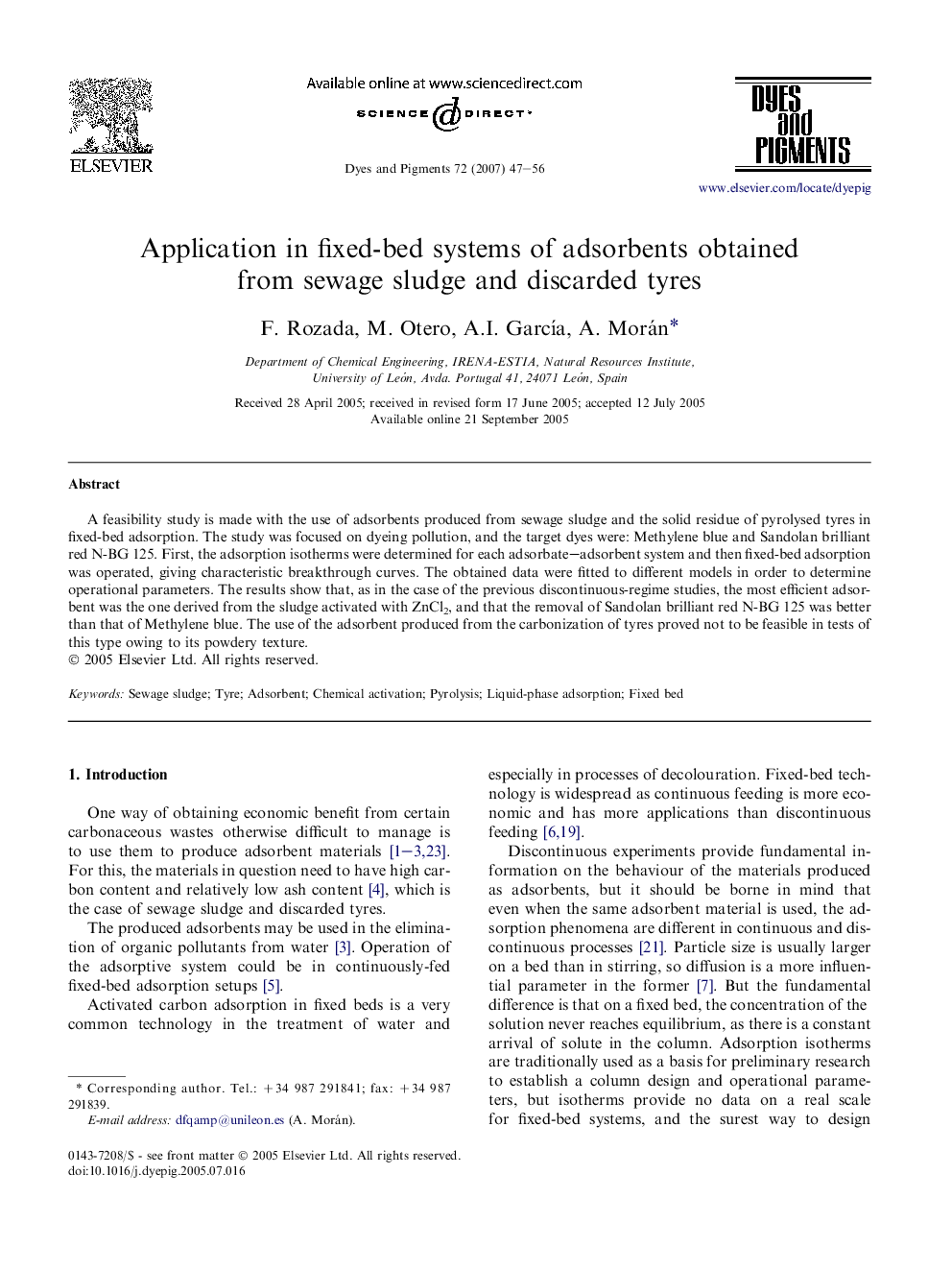| Article ID | Journal | Published Year | Pages | File Type |
|---|---|---|---|---|
| 178416 | Dyes and Pigments | 2007 | 10 Pages |
A feasibility study is made with the use of adsorbents produced from sewage sludge and the solid residue of pyrolysed tyres in fixed-bed adsorption. The study was focused on dyeing pollution, and the target dyes were: Methylene blue and Sandolan brilliant red N-BG 125. First, the adsorption isotherms were determined for each adsorbate–adsorbent system and then fixed-bed adsorption was operated, giving characteristic breakthrough curves. The obtained data were fitted to different models in order to determine operational parameters. The results show that, as in the case of the previous discontinuous-regime studies, the most efficient adsorbent was the one derived from the sludge activated with ZnCl2, and that the removal of Sandolan brilliant red N-BG 125 was better than that of Methylene blue. The use of the adsorbent produced from the carbonization of tyres proved not to be feasible in tests of this type owing to its powdery texture.
